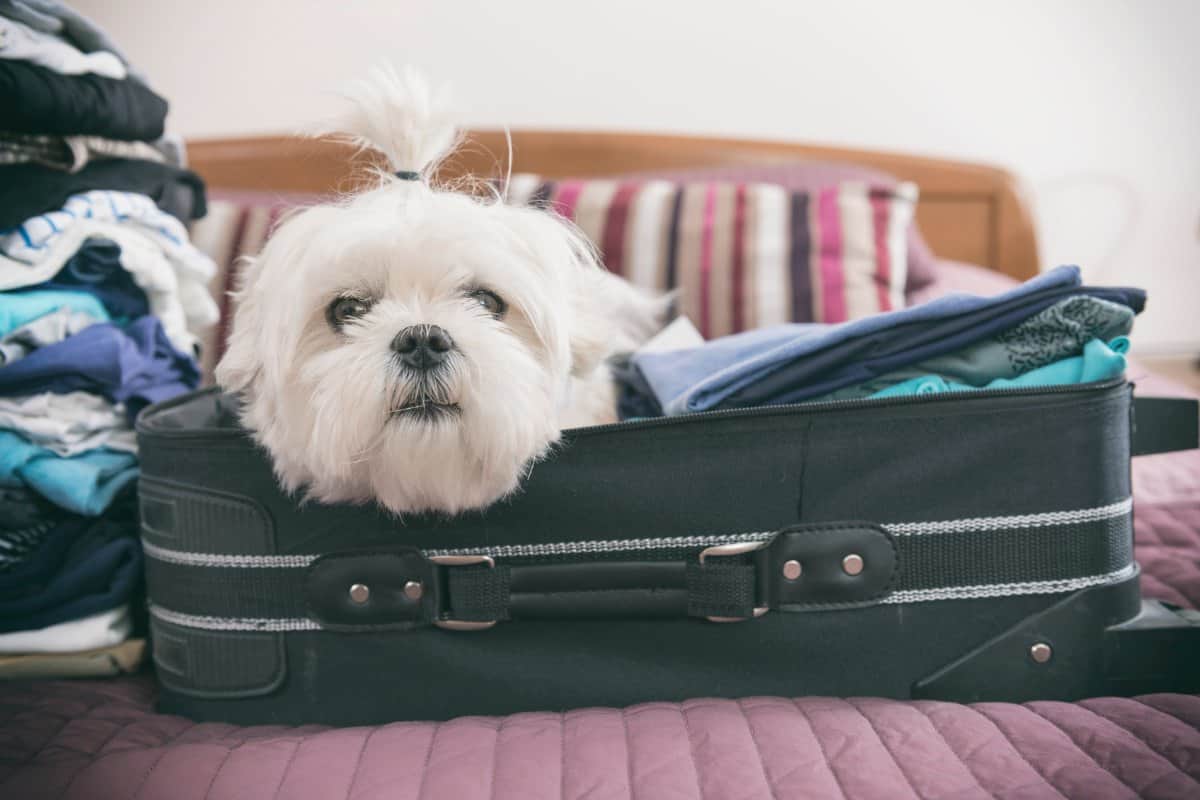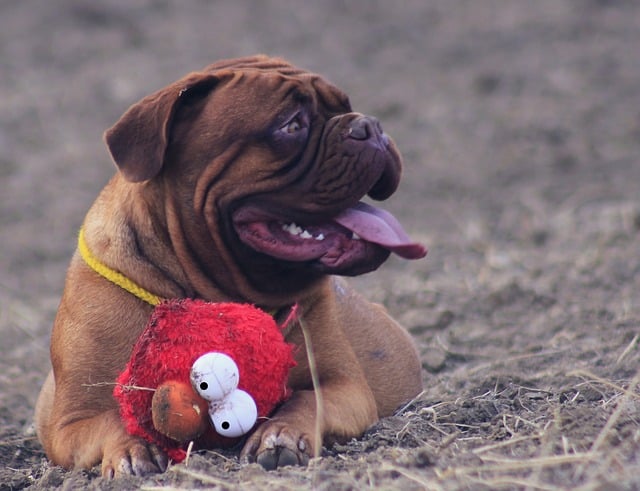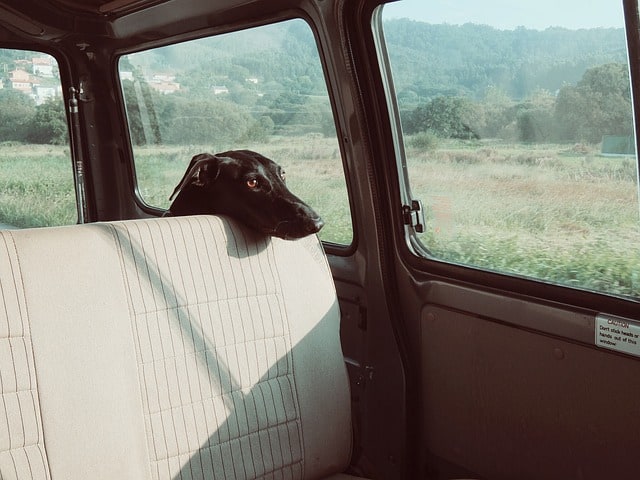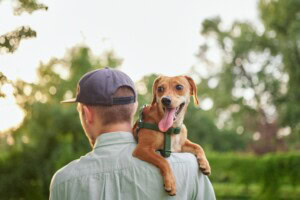
If you think moving is stressful for you, think of it from your pet’s perspective: his entire world is slowly disappearing, and soon he’ll relocate to totally foreign territory with new sights and smells to adjust to. Even if the new home is bigger or has the benefit of a yard, it’s impossible to explain this to your pet in a way he can understand. The good news is there are ways you can make the process easier not only for your best bud, but for you, as well.
This guide aims to make your journey with your pet to a new home smoother and happier. It will help you prepare him for the move ahead of time, accommodate him on the big day, and get him settled in once you’ve arrived. With the right preparation, patience, and reassurance, your pet will be comfortable in his new surroundings in no time.
Preparing Before the Move
If possible, start by getting acquainted with your new neighborhood in advance. Take a walk to scout out nearby dog-friendly parks and nature trails; it will help to know about them ahead of time if you have a dog that needs exercising (or a skittish cat that may get anxious watching dogs regularly pass the window on their way there). As you’re exploring, take note of any loose or unattended pets in the area and the general temperament of the neighborhood pet population. (Do the dogs bark aggressively as you walk past or are their tails wagging? Are there any stray or outdoor cats you should be aware of before walking your dog?)
The truth is that at first, your pet is going to feel a little freaked out in your new home, so scope it out with the eyes of a frightened animal and look for escape and hiding opportunities:
- Could your cat squeeze into that space between the counter and refrigerator?
- Is your bird at risk for flying out through that torn screen door?
- Are there holes in the fence that need repaired before your dog can run loose?
Your pet is going to be confused when you first make the transition, and some may even attempt to “escape” to their old territory and flee out an open door without warning. Look for and immediately address any areas that could put your pet at risk. Don’t wait until move-in day to arrange for repairs; you’ll be caught up in a million other tasks, and the last thing you’ll need amid the chaos is the panic over your pet’s great escape!
When possible, take him to visit the new home before officially moving in. Bring dogs in on a leash for the first visit so they feel secure right by your side. Cats can be let loose as long as all exterior doors and windows are shut. Let them sniff around each room for a few minutes and explore with their noses. The sooner a pet gets used to the smells of his new environment, the quicker he’ll be able to adjust to it, so let him sniff you anytime you return from a visit to the new place, too. He trusts you, so going to a place he’s smelled on you will be a lot less intimidating later on.
Make a visit to your vet within a few weeks of the move so she can give your pet a quick check-up, especially if you’re traveling a long distance to your new home. Make sure all of his vaccinations and paperwork are in order — keep in mind that if you’re moving to a different state, there may be specific requirements for certain animals. Get hard copies of his clean bill of health and certifications of vaccinations; even if you’re only moving across town, it never hurts to have it on-hand to put your landlord’s, neighbors’, or even your movers’ minds at ease.
If your pet has allergies, talk to your vet about any problems he may encounter in his new state and supplemental medication he might need to hold him over until you find a new veterinarian. Consult her with any worries you might have about traveling, including what kind of accommodations she would recommend if you’re moving by car — safety harnesses and crates each have their own benefits and flaws, but your veterinarian will know what’s best for your individual pet.
If you’re making a long road trip to reach your destination, help your pet prepare for that, too. If he’ll be in a crate or cage that he isn’t used to, put it somewhere he’ll see it every day. When he’s comfortable with its presence (and doesn’t regard it suspiciously), put his favorite toy or blanket inside, then praise him when he goes inside to retrieve it. This can help him see it as a safe place and will encourage him to hide there if he feels scared.
When he’s no longer hesitant to enter the crate, carry him around the house in it, then around the yard. Test out how he does with the crate inside the car. If he has trouble, work with him to get used to it. If you’ll be using a safety harness, practice in a parked car by strapping him into it while you’re sitting next to him. Stay with him, praising him when he sits calmly, and eventually work your way up to sitting in the driver’s seat. Don’t take him out of the driveway if he’s breathing very rapidly or whining; he needs to be relaxed and quiet so you can focus on driving.
Once he’s able to stay calm in the car, start with short practice drives on quiet neighborhood roads. Gradually increase the time you’re out and work up to highways and interstate roads. Give him a few weeks to get used to it and give him a special treat after every successful car ride. If he continues to have anxiety and you worry he won’t be able to handle the stress of a long trip, consult your vet.
Try to keep your pet away from the moving process as much as possible. Put him in a separate, untouched room with a few toys while you pack other areas. You may not be able to prevent him from seeing the empty space later, but you can spare him the overwhelming process of watching his surroundings slowly disappear before his eyes. If he seems nervous, comfort him in a calm voice and reassure him that everything is OK. If you’re calm, it helps him to relax.
Pack up his things last and leave him a couple of toys and a blanket so he doesn’t feel completely cut off from familiarity. Make sure his box is clearly marked and kept somewhere separate where it won’t get pushed to the back of the moving van. The sooner you can get his stuff into his new environment, the better, so you’ll want to be able to get to it easily once you’ve arrived.

The night before the move, give him a little extra love and attention. Moving day will be confusing and probably a little scary for him, so give him as much reassurance as you can ahead of time. Don’t overdo it by smothering him with dramatic hugs; just spend a little extra time rubbing his belly or hanging out on the couch with him. The point is to make things feel as normal as possible so that he stays relaxed.
The Day of the Move
One of the best ways you can ease your pet’s anxiety the day of the move is to do your best to stay calm. Sure, this is easier said than done in a move, but if you’re freaking out, he’s going to freak out too. Stick to his normal routine as much as possible — if you normally take a morning walk together, still go. The less the move appears to impact the rest of his world, the less he’ll see it as scary.
Keep him separated from the moving chaos as much as possible. You may want to stash him in a quiet, closed-off room with his water bowl and some toys (and a litterbox for a cat). Pack up this room last, and only enter it to check in on him every once in a while. If he seems too worked up over the commotion, ask a neighbor to look after him until right before you’re ready to leave for the new place. He and his supplies should be the last things you gather into the car.
If you’re traveling a far distance by car, you’ll need to pack a supply kit for your pet:
- Several days’ worth of food — pack enough so you’re prepared in case your trip takes longer than planned
- Plenty of water — birds, reptiles, and small cats should be OK with a few bottles over the course of a couple of days, but larger dogs may need a gallon or more per day
- Any pertinent health records or vaccination certifications
- A familiar blanket
- A familiar toy that will keep him occupied but won’t be a safety risk while driving — avoid anything that could roll under your pedals or come flying into the front of the car
- A few days’ worth of any of his medication(s)
- Towels for potty or upset stomach accidents
- Plastic baggies
- Leash and harness
- Temporary tags with your cell phone number, future address, and a note explaining your move (you don’t want people to misunderstand how he got so far from home)
- Pet first aid kit
Keep him restrained the entire car trip, no matter how calm he seems. A sudden horn honk or unexpected traffic shifts could cause him to panic and try to run, so it’s important to keep his motion limited for both your safety and his own. Speak to him in a steady, relaxed voice if he starts to get worked up, but don’t hesitate to pull over if his behavior seems to be getting too erratic.

Be mindful at rest stops that he may attempt to dart out the door. For a dog in need of a potty break (or just a break from the car), keep him restrained or in his crate with the car door shut until he’s securely fastened into his harness. Let him stretch his legs, but be wary of oncoming traffic and any other pets that may be nearby. Cats are usually OK without a break for trips under six hours, but if you’ll be on the road longer he might need access to a disposable litter box around the six hour mark. And don’t forget to offer water any time you take a break from driving! Keep in mind that even if he’s thirsty, his anxiety may make him reluctant to take a drink, so you may have to encourage him.
When you finally arrive at your new home, give him a potty break and a little bit of play time to burn off his pent-up energy. Then, secure him in a room so you can do a final sweep of the space. Make sure there’s no lingering bleach cleaner in the toilet bowl that your dog might accidentally drink and that all the windows are closed or screened so your cat can’t make a hasty escape. If you weren’t able to perform a safety check before, look for those escape routes and cramped spaces. Fix what you can and let others know about risky areas. Let the movers know where you’re keeping your pet — a sign on the door is a fantastic idea — and keep him confined until they’re completely finished bringing everything inside.
If this is the first time your pet has ever visited, lead him around on his leash and let his nose go to work. If possible, get furniture and other familiar items moved to similar places as in your previous home. If his food dish was in the kitchen at the old place, it should be in the new kitchen now. Show him that while the location may be new, there are plenty of familiar elements that can help him settle in. Make sure cats know where their litter box is and dogs know where there’s a doggy door or exterior door where they can signal you to go out.
Avoid letting your dog in the backyard unattended unless there’s no chance he’ll be able to jump over or dig under the fence. (If you weren’t able to check the fence before your move, assume there’s a loose board he could escape through.) Even if he seems to be adjusting well, he could still get confused and seek out more familiar territory. There are also countless new smells all around him and you never know what will make him determined to explore past his boundaries.
Instead of going out for dinner your first night, consider ordering in and keeping your pet company. He could get destructive if left alone in a new place, and he’ll appreciate the extra attention after a stressful day. Make sure you’re using his regular food dish and that you unpack his box of stuff first. After dinner and down time, he can pass out in his cozy, familiar bed and you can start decorating your new home.
Settling In
As you start to get settled in your new home, get right back to your pet’s normal routine. If you changed time zones, make the adjustment immediately: if he normally eats breakfast at 7, feed him at 7 even if it feels like 5 a.m. to your pet. It won’t take long for his body to catch up to the adjusted schedule, so be consistent.
Ask your neighbors for recommendations on good veterinarians, and make an introductory appointment as soon as possible. Not only will you already have a doctor to contact in the event of an emergency, it’ll be a much less stressful way for your pet to meet him. Get updated tags and update the info in his microchip if he has one. Discuss any environmental changes that may impact your pet’s health or happiness; for example, if you’ve just moved from a mild climate to a desert town in the southwest, you’ll want some tips on helping him adjust to high temperatures. If you have a small dog or a cat that goes outside sometimes, you’ll want to ask about animal predators to look out for, as well.
Keep a close eye on your pet’s behavior to see how he’s adapting. You may want to take a few extra days off with particularly anxious pets, but don’t coddle them too much. Spend time with them, but make it a point to leave the house for increasing amounts of time. The more that he sees that you aren’t leaving him in a strange new place all by himself, the more he’ll be able to relax when you reach for your keys.
It will take time, but your pet will adjust eventually. Once he realizes that he’s in a safe place and most other things have stayed the same, he’ll love his new home so much that he won’t be able to remember living anywhere else.























